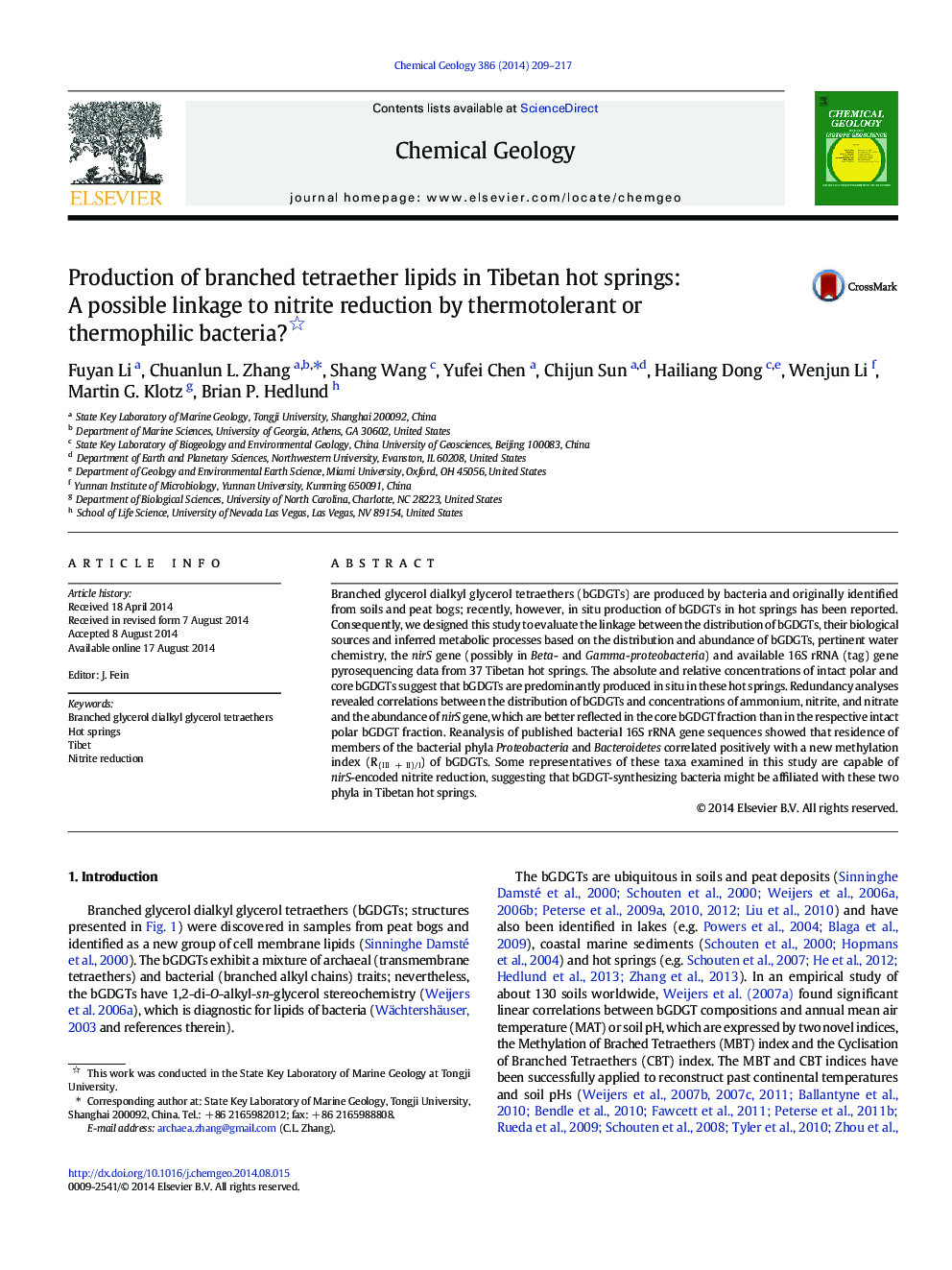| Article ID | Journal | Published Year | Pages | File Type |
|---|---|---|---|---|
| 4698666 | Chemical Geology | 2014 | 9 Pages |
•C-bGDGTs were correlated with IP-bGDGTs in hot springs.•Abundance of N compounds, the nirS gene, and highly methylated bGDGTs is correlated.•Presence of Proteobacteria and Bacteroidetes correlates with bGDGT methylation•Members of Proteobacteria and Bacteroidetes are possible sources of methylated bGDGTs.
Branched glycerol dialkyl glycerol tetraethers (bGDGTs) are produced by bacteria and originally identified from soils and peat bogs; recently, however, in situ production of bGDGTs in hot springs has been reported. Consequently, we designed this study to evaluate the linkage between the distribution of bGDGTs, their biological sources and inferred metabolic processes based on the distribution and abundance of bGDGTs, pertinent water chemistry, the nirS gene (possibly in Beta- and Gamma-proteobacteria) and available 16S rRNA (tag) gene pyrosequencing data from 37 Tibetan hot springs. The absolute and relative concentrations of intact polar and core bGDGTs suggest that bGDGTs are predominantly produced in situ in these hot springs. Redundancy analyses revealed correlations between the distribution of bGDGTs and concentrations of ammonium, nitrite, and nitrate and the abundance of nirS gene, which are better reflected in the core bGDGT fraction than in the respective intact polar bGDGT fraction. Reanalysis of published bacterial 16S rRNA gene sequences showed that residence of members of the bacterial phyla Proteobacteria and Bacteroidetes correlated positively with a new methylation index (R(III + II)/I) of bGDGTs. Some representatives of these taxa examined in this study are capable of nirS-encoded nitrite reduction, suggesting that bGDGT-synthesizing bacteria might be affiliated with these two phyla in Tibetan hot springs.
